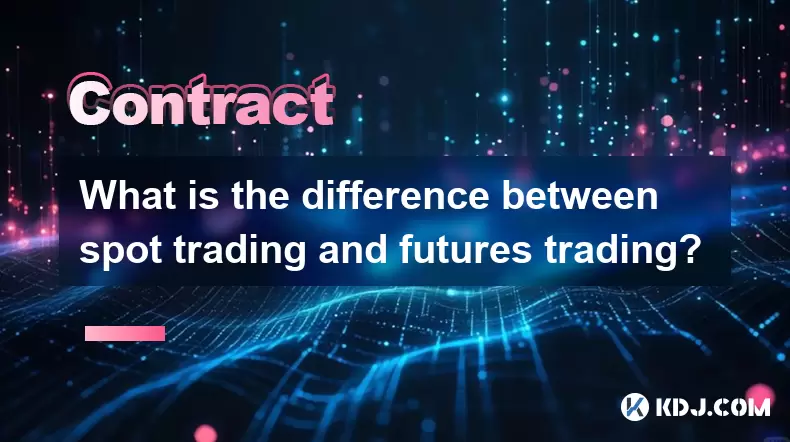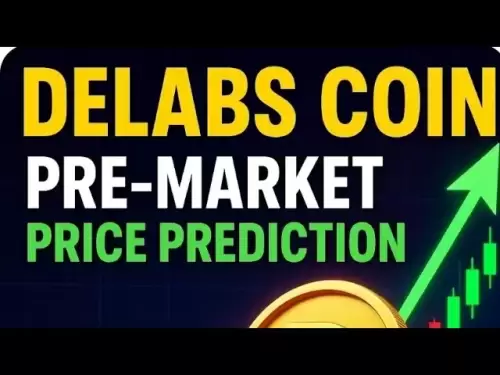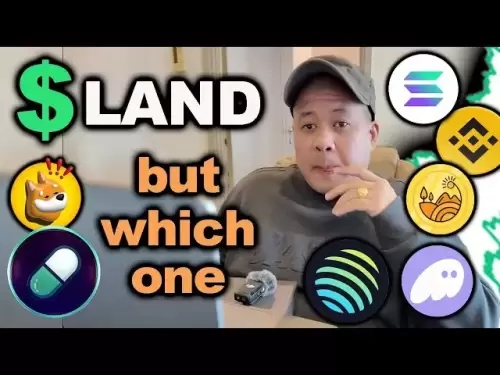-
 Bitcoin
Bitcoin $118600
0.36% -
 Ethereum
Ethereum $3855
1.06% -
 XRP
XRP $3.195
-0.09% -
 Tether USDt
Tether USDt $1.000
-0.04% -
 BNB
BNB $844.5
6.23% -
 Solana
Solana $191.3
2.83% -
 USDC
USDC $0.9997
-0.01% -
 Dogecoin
Dogecoin $0.2376
0.10% -
 TRON
TRON $0.3242
0.83% -
 Cardano
Cardano $0.8222
0.13% -
 Hyperliquid
Hyperliquid $45.26
6.53% -
 Sui
Sui $4.200
-2.56% -
 Stellar
Stellar $0.4336
-1.24% -
 Chainlink
Chainlink $18.86
0.28% -
 Hedera
Hedera $0.2796
-1.75% -
 Bitcoin Cash
Bitcoin Cash $583.3
-1.84% -
 Avalanche
Avalanche $27.06
8.09% -
 Litecoin
Litecoin $112.3
-1.16% -
 Toncoin
Toncoin $3.353
0.58% -
 UNUS SED LEO
UNUS SED LEO $8.968
-0.11% -
 Shiba Inu
Shiba Inu $0.00001395
-0.54% -
 Ethena USDe
Ethena USDe $1.001
-0.03% -
 Uniswap
Uniswap $10.76
0.69% -
 Polkadot
Polkadot $4.175
0.26% -
 Monero
Monero $326.7
1.07% -
 Bitget Token
Bitget Token $4.665
1.61% -
 Dai
Dai $0.9998
-0.02% -
 Pepe
Pepe $0.00001271
0.32% -
 Cronos
Cronos $0.1416
2.01% -
 Aave
Aave $299.3
1.15%
What is the difference between spot trading and futures trading?
Spot trading involves immediate asset ownership at current prices, while futures trading allows speculation on future prices with leverage and no instant delivery.
Jul 28, 2025 at 11:14 am

Understanding Spot Trading
Spot trading, also known as spot market trading, refers to the immediate exchange of assets at their current market price. In this form of trading, transactions are settled "on the spot," meaning the buyer pays for and receives the asset instantly or within a very short time frame (typically within two business days).
In the cryptocurrency space, when you buy Bitcoin on a spot exchange like Binance, Coinbase, or Kraken, you own the actual digital asset. You can transfer it to your wallet, use it for transactions, or hold it for future appreciation. The price of the asset in spot trading is based on real-time supply and demand dynamics.
Key characteristics of spot trading:
- Ownership of the asset: Traders receive the actual cryptocurrency after purchase.
- No expiration date: Positions don’t expire; they can be held indefinitely.
- Lower risk compared to derivatives: There’s no leverage involved unless explicitly enabled via margin trading.
What Is Futures Trading?
Futures trading involves entering into a contract to buy or sell an asset at a predetermined price on a specified future date. Unlike spot trading, futures contracts do not require immediate delivery of the underlying asset. Instead, traders speculate on the future price movement of cryptocurrencies like Bitcoin or Ethereum without owning the actual coins.
Cryptocurrency futures are commonly offered by exchanges such as Binance Futures, Bybit, and OKX. These contracts allow traders to profit from both rising and falling markets through long and short positions.
Important features of futures trading:
- Leverage availability: Traders can open larger positions with smaller capital, though this increases both potential gains and losses.
- Contract expiration: Futures contracts come with set expiry dates, after which they are settled either in cash or via the underlying asset.
- Margin requirements: A portion of the total trade value must be deposited as collateral to open and maintain a position.
Comparing Ownership and Settlement
One of the most significant differences between spot and futures trading lies in asset ownership and settlement timing.
In spot trading, once a transaction is completed, the trader owns the cryptocurrency outright. This means they can send it to another wallet, stake it, or use it in decentralized finance (DeFi) protocols. The settlement occurs almost immediately, typically within seconds on crypto exchanges.
Conversely, futures trading does not result in actual asset ownership unless the contract is physically settled upon expiration. Most crypto futures are cash-settled, meaning profits or losses are reflected in the trader's account balance without any transfer of the underlying coin.
Settlement methods in futures trading:
- Cash settlement: Profits or losses are calculated and paid out in fiat or stablecoins.
- Physical delivery: The actual asset is delivered upon contract expiration (less common in crypto).
Understanding Leverage and Risk Exposure
Leverage plays a crucial role in distinguishing futures trading from spot trading. While some spot platforms offer margin trading, futures contracts inherently operate with leverage, allowing traders to control large positions with relatively small capital.
For example, a 10x leveraged futures contract lets a trader open a $10,000 position by only depositing $1,000 as margin. However, this also amplifies the risk — if the market moves against the trader, they may face liquidation, where the exchange automatically closes the position to prevent further losses.
Risk factors in futures trading:
- High volatility exposure: Cryptocurrencies are inherently volatile, making leveraged futures highly risky.
- Funding fees: Perpetual futures contracts often include periodic funding payments between long and short traders based on interest rates and price differentials.
- Margin calls: If equity in a trader’s account falls below the required maintenance margin, additional funds must be added to keep the position open.
Use Cases and Market Participants
The choice between spot and futures trading often depends on the trader’s goals, risk tolerance, and investment strategy.
Spot trading is ideal for:
- Long-term investors: Those who believe in the fundamental value of a cryptocurrency and want to hold it over time.
- Hodlers: Individuals who prefer to store digital assets securely rather than actively trade them.
- Users needing actual coins: For example, those wanting to spend crypto or participate in token-based projects.
On the other hand, futures trading appeals to:
- Short-term speculators: Traders looking to capitalize on price swings without holding the underlying asset.
- Hedgers: Institutional investors or miners who use futures to offset potential losses in their spot holdings.
- Algorithmic traders: Those using bots to exploit arbitrage opportunities between spot and futures markets.
Frequently Asked Questions
Can I lose more money than I invest in futures trading?
Yes, especially if you're trading with leverage. If the market moves sharply against your position and you fail to meet a margin call, your broker or exchange may liquidate your position and deduct funds beyond your initial deposit.
Are futures contracts available for all cryptocurrencies?
No, futures contracts are typically offered for major cryptocurrencies like Bitcoin (BTC), Ethereum (ETH), Binance Coin (BNB), and sometimes Solana (SOL) or Cardano (ADA). Lesser-known altcoins rarely have active futures markets due to low liquidity.
Do I need to hold crypto in my wallet to trade futures?
No, futures trading does not require you to own the underlying cryptocurrency. You’re simply speculating on its future price. However, some exchanges allow traders to collateralize existing spot holdings to fund futures positions.
How are futures prices determined in crypto markets?
Futures prices are derived from the spot price but can diverge due to market expectations, funding rates, and time until contract expiration. The difference between spot and futures prices is known as the basis or contango.
Disclaimer:info@kdj.com
The information provided is not trading advice. kdj.com does not assume any responsibility for any investments made based on the information provided in this article. Cryptocurrencies are highly volatile and it is highly recommended that you invest with caution after thorough research!
If you believe that the content used on this website infringes your copyright, please contact us immediately (info@kdj.com) and we will delete it promptly.
- Crypto Investments, Dogecoin Substitutes, and Wealthy Returns: Navigating the Meme Coin Mania and Beyond
- 2025-07-29 00:30:13
- Week Review: July 21 - July 27 - Crypto, AI, and Trade Deals, Oh My!
- 2025-07-29 00:30:13
- Bitcoin, Gold, and Debt Hedges: A New Yorker's Take
- 2025-07-29 00:50:12
- Bitcoin, Japan, Metaplanet: A New Era of Corporate Crypto Adoption?
- 2025-07-29 00:50:12
- Bitcoin Bonanza in Japan: Metaplanet Leads the Charge
- 2025-07-29 00:55:23
- Bitcoin, Merger, and ProCap Financial: A New Era for Crypto in Traditional Finance
- 2025-07-29 00:55:23
Related knowledge

Why is my Bitstamp futures position being liquidated?
Jul 23,2025 at 11:08am
Understanding Futures Liquidation on BitstampFutures trading on Bitstamp involves borrowing funds to open leveraged positions, which amplifies both po...

Does Bitstamp offer inverse contracts?
Jul 23,2025 at 01:28pm
Understanding Inverse Contracts in Cryptocurrency TradingIn the realm of cryptocurrency derivatives, inverse contracts are a specific type of futures ...

What is the difference between futures and perpetuals on Bitstamp?
Jul 27,2025 at 05:08am
Understanding Futures Contracts on BitstampFutures contracts on Bitstamp are financial derivatives that allow traders to speculate on the future price...

How to find your Bitstamp futures trade history?
Jul 23,2025 at 08:07am
Understanding Bitstamp and Futures Trading AvailabilityAs of the current state of Bitstamp’s service offerings, it is critical to clarify that Bitstam...

Can I use a trailing stop on Bitstamp futures?
Jul 23,2025 at 01:42pm
Understanding Trailing Stops in Cryptocurrency TradingA trailing stop is a dynamic type of stop-loss order that adjusts automatically as the price of ...

Can I use a trailing stop on Bitstamp futures?
Jul 25,2025 at 02:28am
Understanding Trailing Stops in Cryptocurrency Futures TradingA trailing stop is a dynamic type of stop-loss order that adjusts automatically as the m...

Why is my Bitstamp futures position being liquidated?
Jul 23,2025 at 11:08am
Understanding Futures Liquidation on BitstampFutures trading on Bitstamp involves borrowing funds to open leveraged positions, which amplifies both po...

Does Bitstamp offer inverse contracts?
Jul 23,2025 at 01:28pm
Understanding Inverse Contracts in Cryptocurrency TradingIn the realm of cryptocurrency derivatives, inverse contracts are a specific type of futures ...

What is the difference between futures and perpetuals on Bitstamp?
Jul 27,2025 at 05:08am
Understanding Futures Contracts on BitstampFutures contracts on Bitstamp are financial derivatives that allow traders to speculate on the future price...

How to find your Bitstamp futures trade history?
Jul 23,2025 at 08:07am
Understanding Bitstamp and Futures Trading AvailabilityAs of the current state of Bitstamp’s service offerings, it is critical to clarify that Bitstam...

Can I use a trailing stop on Bitstamp futures?
Jul 23,2025 at 01:42pm
Understanding Trailing Stops in Cryptocurrency TradingA trailing stop is a dynamic type of stop-loss order that adjusts automatically as the price of ...

Can I use a trailing stop on Bitstamp futures?
Jul 25,2025 at 02:28am
Understanding Trailing Stops in Cryptocurrency Futures TradingA trailing stop is a dynamic type of stop-loss order that adjusts automatically as the m...
See all articles

























































































